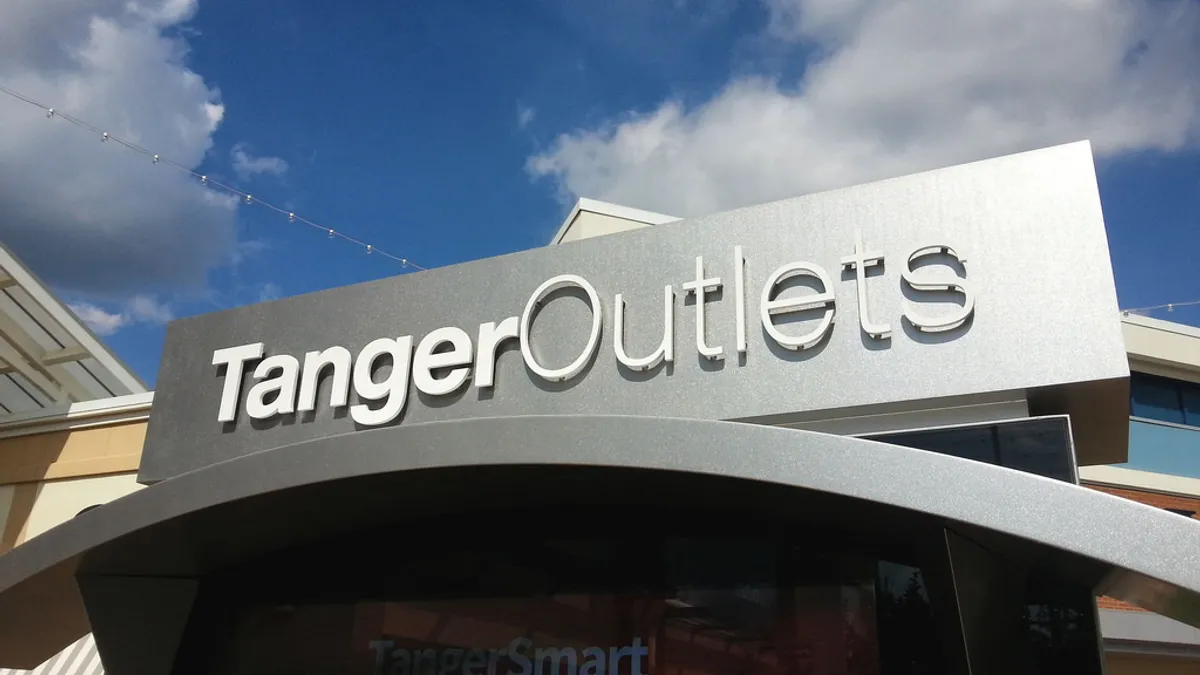Dive Brief:
-
Outlet stores run by brands and off-price stores like the retailers of TJX companies are operating in one of the healthiest areas of retail, with estimates from Moody’s Investors Service last year for steady growth of 6% to 8% in the next five years—quite above the 4% predicted for the rest of retail.
-
That has launched a slew of would-be rivals, with retailers like Macy’s and even Kohl’s launching off-price stores of their own, and analysts and others worried about those stores cannibalizing sales from flagship stores and diluting the flagship brand.
-
A recent study from the University of Texas at Dallas finds that, rather than those effects, customers who regularly shopped at one “leading specialty retailer with more than 400 retail stores and 100 exclusively sourced outlet stores” actually spent more at the retailer’s flagship store once they shopped regularly at its outlet store.
Dive Insight:
TJX just this week posted yet another rosy earnings report and outlook, with little of the talk of “warm holiday season” or “strong dollar” that serve as reasons for many department stores’ weak reports for the same period.
And that’s the reason that off-price retail is a game that most everyone wants to play. Nordstrom has expanded its Rack stores and Macy’s finally got in the game this year with its off-price “Backstage” stores.
While Howard Davidowitz, chairman of New York City-based retail consulting and investment banking firm Davidowitz & Associates Inc., has told Retail Dive that retailers opening more off-price outlets are smart to set up shop in a successful area of retail, other experts have expressed concerns about brand dilution and sales cannibalization.
“They’ll do a lot of business,” Columbia University business school retail studies professor Mark Cohen told Retail Dive last year about Macy’s Backstage plans. “The question is: How much is truly incremental, how much simply represents transfer sales,” Cohen says. “And more insidious than that, how much will it further erode Macy’s brand equity?”
The UT-Dallas study, published late last year in academic journal Management Science, eases those concerns somewhat. “The study clearly shows that when positioned properly, outlet channels can bring in not only incremental dollars—from customers who would otherwise not buy from the regular retail stores—but it also serves as an entry point for certain kinds of customers,” Gonca Soysal, an assistant professor of marketing in the Naveen Jindal School of Management, said in Management Science. “When managed well, this is a good strategy.”
“Managed well" is a fairly loaded phrase. But Soysal said the research results suggest that an outlet store could be a gateway for more price-sensitive customers to a brand’s higher-priced flagship store.
“If there’s a price-sensitive customer who is not very experienced with the retailer, they might come in and experiment with the brand at the outlet channel,” Soysal said. “Since the products have similar designs and similar fits across the channels, once they gain experience with the brand, they might feel more comfortable purchasing more from the higher-priced channel.”
The researchers didn’t explore why shoppers behaved as they did, and did not identify which speciality retailer they studied. Both would help in understanding how much the results can be applied more widely.
There’s also other evidence that some consumers eventually are turned off by outlet stores. Luxury brand Coach, for example, has seen sales improve after it tempered its discounting and outlet sales. It’s possible that luxury brands, which depend on a sense of exclusivity, are more vulnerable to brand dilution. And some shoppers are so incensed to find that some brands’ outlet stores carry specially made, lower-quality merchandise that they’ve gone so far as to sue, members of Congress have asked the Federal Trade Commission to investigate the practice as potentially misleading, and the Better Business Bureau has published a guide warning consumers about off-price retail practices.













